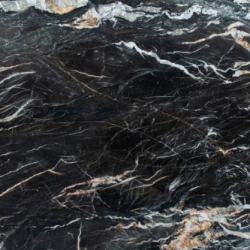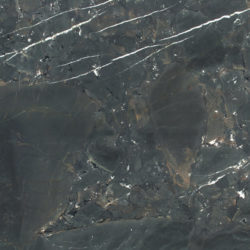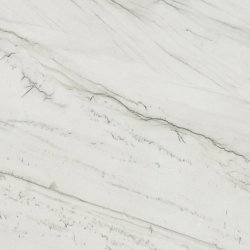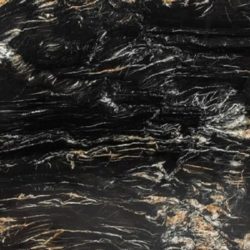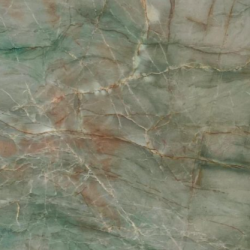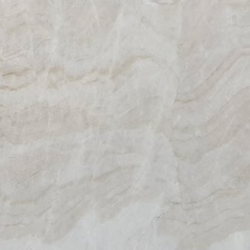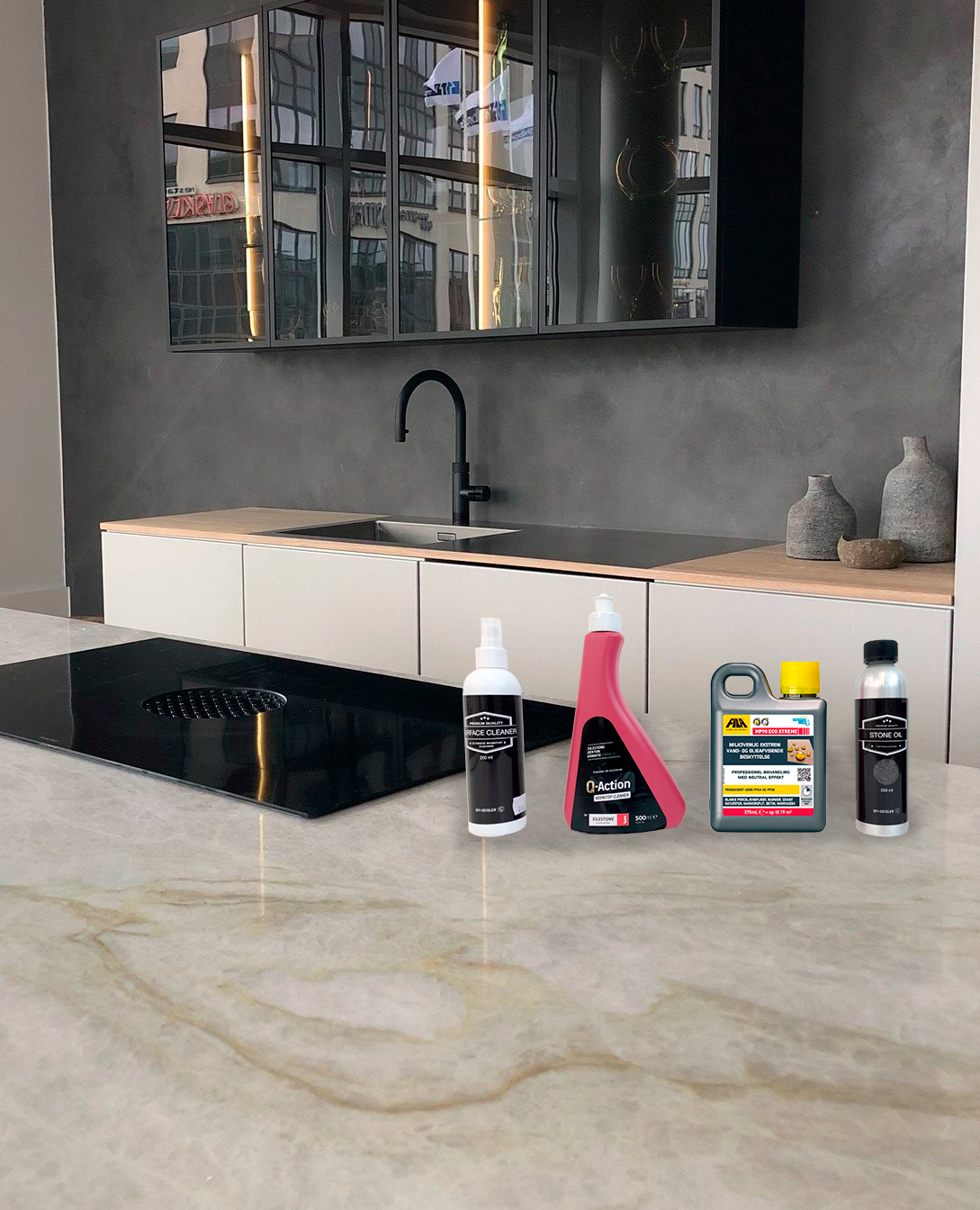Quartzite
Origin
Quartzite is a naturally occurring stone that belongs to the group of metamorphic rocks. This means that the rock was originally another type of stone but has been transformed under high pressure and temperature. Quartzite begins as sand – typically sand grains from beaches or rivers – which over time are compressed and become sandstone. When the sandstone is buried deep beneath the Earth’s surface for millions of years, it is subjected to extreme pressure and heat. Under these conditions, the sand grains almost fuse together.
This process is what gives quartzite its remarkable hardness. The name quartzite reflects both the high quartz content and the significant hardening the rock undergoes during its formation.
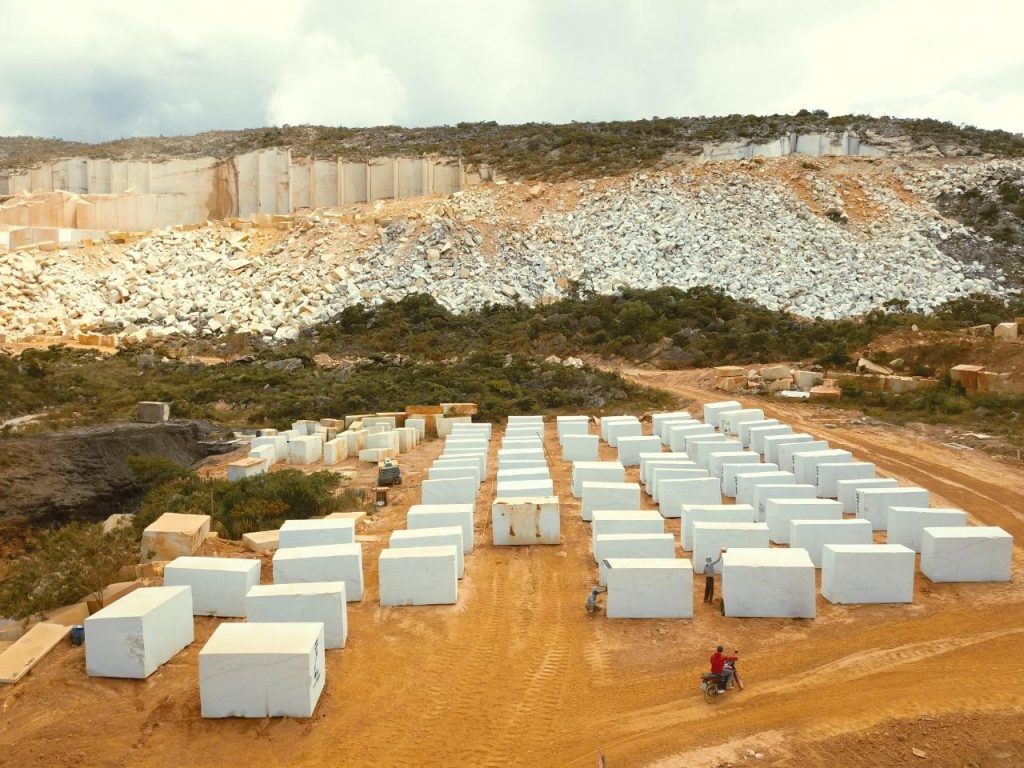
You see here a quarry that extracts the Mont Blanc stones. The large blocks are ready for transport. These are cut into thinner slabs that later become worktops.
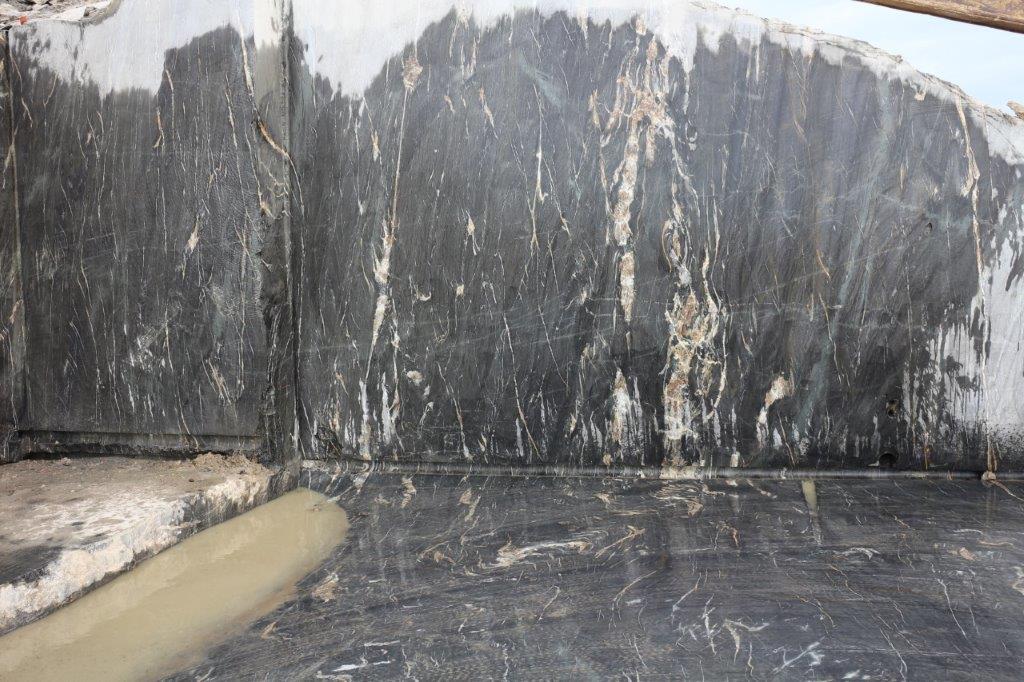
You see here the quarry where the Belvedere rocks are mined. The photo clearly shows the great variation in the colour and structure of rocks mined from different locations on the mountain.
The stones are quarried from mountainsides in regions such as Africa and Brazil.
”J’adore” och ”Mont Blanc” originate from quarries in the Bahia province, Brazil – an area renowned for its high-quality natural stone extraction.
”Infinity Brown” och ”Taj Mahal” are quarried in Ceará, a state in northeastern Brazil, which is also well known for its natural stone production.
”Belvedere” originates from Angola in Africa.
Characteristics
There is a natural variation in the patterns, veins and colours of worktops made from natural stone. The minerals in quartzite have characteristic colours and structures, quite different from, for instance, graphite.
Quartzite can range in colour from black to white, with beautiful veins running across the slabs in a variety of contrasting colours. The veins develop from many years of varying pressure and random amounts of iron oxide, silica and other minerals present during the formation of these unique rocks. Some rocks have glass-like veins which can be mistaken for cracks. However, these do not weaken the stone in any way. They are a natural part of the material and do not entitle claims for compensation.
Small hollows, holes and air bubbles are also natural elements of natural stone and cannot be avoided.
These cannot always be filled, and some unevenness must be expected.
If you choose a stone from small samples or photos, it is extremely important to be aware that the sample may differ greatly from the actual stone worktop. All raw stone slabs are different.
There may be large areas of vibrant colour and grain; others may be more homogeneous in colour.
Such dissimilarities must be accepted.
Our range includes the five quartzite types shown above. You will find examples of whole worktops in the different types of stone at our website, under materials.
Properties
Quartzite has been given a hardness rating of 7 on the Mohs scale of mineral hardness. This is slightly harder than granite, which has a hardness of 6. This makes the material exceedingly durable.
Quartzite is a durable stone that easily withstands everyday use. It is resistant to scratches and heat, but to best preserve the surface, it is always recommended to use chopping boards and trivets. Do note that scratches tend to appear more visibly on darker stones.
Mohs scale of mineral hardness





